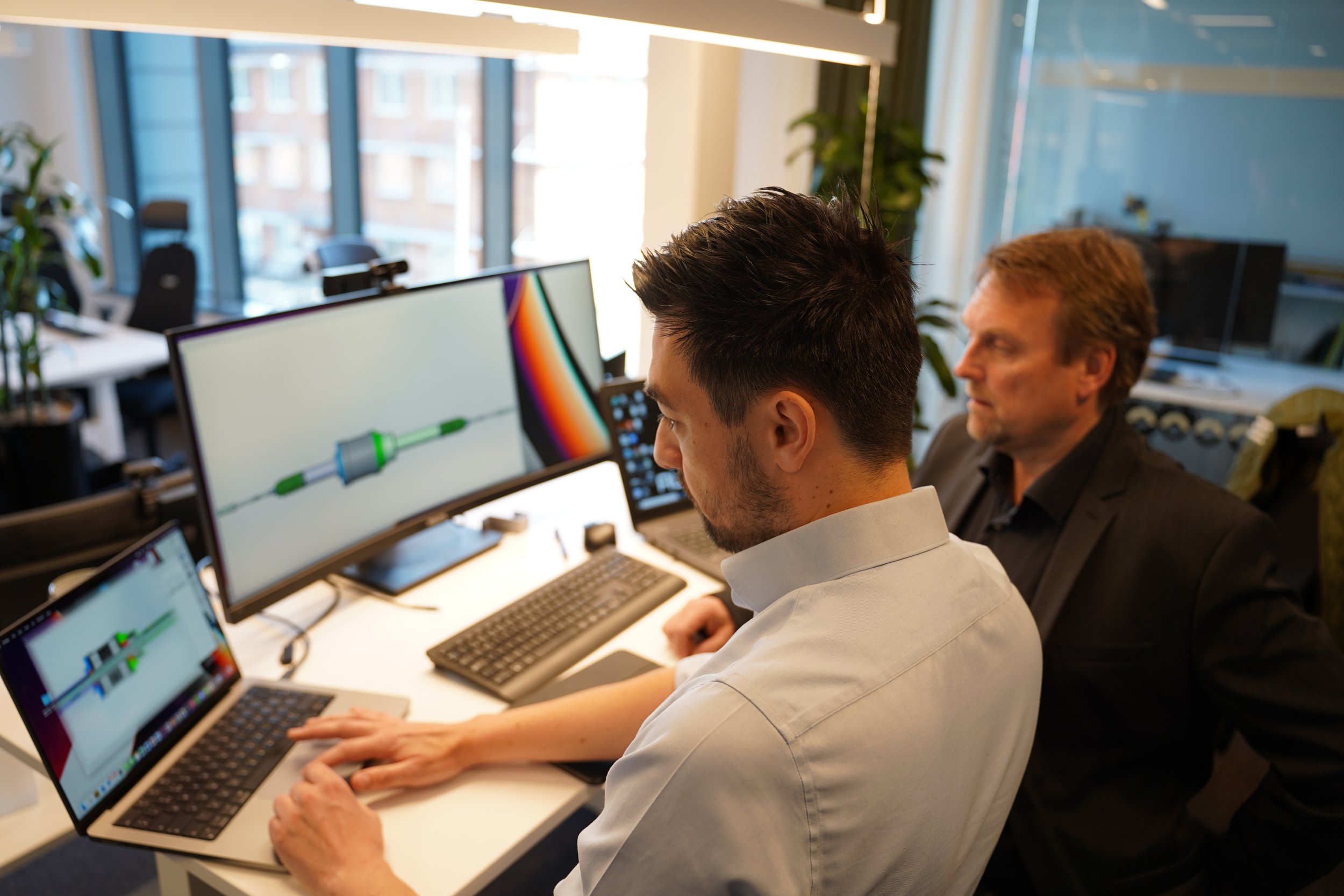INNOVATION SPOTLIGHT: Chassis Autonomy
From Formula 1 to patentable innovations
Thomas Li, the Co-founder and CTO of Chassis Autonomy, whose career started in Formula 1, now spearheads a venture revolutionizing the automotive sector with their advanced steer-by-wire system. Learn how Lightbringer's GenAI capabilities streamlined their patent process, enabling faster and more efficient innovation protection. Discover how this collaboration not only saved time and resources but also empowered Chassis Autonomy's engineers to focus on refining groundbreaking technologies.
Can you introduce yourself and tell us about your company, Chassis Autonomy?
THOMAS I'm Thomas Li, with a career history that began in Formula 1 and now leading Chassis Autonomy as Co-founder and CTO. Our venture emerged in October 2021, aiming to disrupt the automotive industry with our cutting-edge steer-by-wire system, especially as the world pivots towards autonomous mobility and connected vehicles.
“Our portfolio now boasts nearly 30 patents, with eight of these successfully filed using Lightbringer.”
THOMAS LI
What challenges did Chassis Autonomy face in the patent process before engaging with Lightbringer?
THOMAS The patent journey was daunting. Despite our technical expertise and having filed nearly 20 patents previously; the intricate legalities and the technical-to-legal translation processes were time-consuming and laborious. Now using Lightbringer, a significant bottleneck in developing and then protecting our innovation pipeline is almost eliminated.
How did Lightbringer transform the patent application process for Chassis Autonomy?
THOMAS Lightbringer was a game-changer, simplifying the entire application process. Its GenAI capabilities helped refine our ideas and define the major parts of an innovation, skip the laborious steps and eliminate the element of “pulling things together”. Lightbringer navigated the patent application in a more streamlined, understandable, and efficient manner, significantly reducing the time and effort required.
“Engineers really don't like dealing with patents. They find the legal talk difficult to understand and the long documents boring. They are great at creating novel and innovative solutions, but do not look forward to the patent part. Lightbringer has changed that.”
THOMAS LI
Can you share a specific success story or experience with Lightbringer that stood out for Chassis Autonomy?
THOMAS Certainly, the most impactful was the accelerated filing of our second-generation steering system patents. Through Lightbringer, what might have taken months was accomplished in mere weeks. This efficiency not only saved time but also resources, allowing us to focus on further technical development and innovation. IP is extremely important for deep-tech companies like ours, but what is also very important is time. Time simply cannot be scaled, so it is imperative as a start-up that we maximise our ability as a start-up to rapidly innovate, because every lost moment is a chance for our legacy competitors to catch up.
“Lightbringer not only saved us time but also, crucially, saved us money. This extra time allowed our engineers to focus more on refining our technology and maintaining our competitive edge, rather than getting stuck on patent paperwork.”
THOMAS LI
Lightbringer made patenting straightforward and user-friendly for engineers, eliminating the need for additional training. Its intuitive design meant I, as the CTO, could focus on broader IP strategy and team management, entrusting the detailed patent drafting to the engineers. This shift not only streamlined our process but also empowered our team to contribute directly to our innovation pipeline.
“Lightbringer really enhanced collaboration between our engineers and patent attorneys.”
THOMAS LI
It retained the crucial initial conceptual phase and the human touch in drafting, while eliminating unnecessary steps. This focus on essential workflow aspects significantly improved the quality and efficiency of patent applications.
In what ways did Lightbringer's legal partners contribute to your patent application process?
Thomas: Lightbringer's legal partners brought invaluable expertise, blending seamlessly with the platform's technological solutions to guide us through the patent application with confidence. This synergy ensured we navigated the process not just with ease but also with a sense of security and efficiency.







